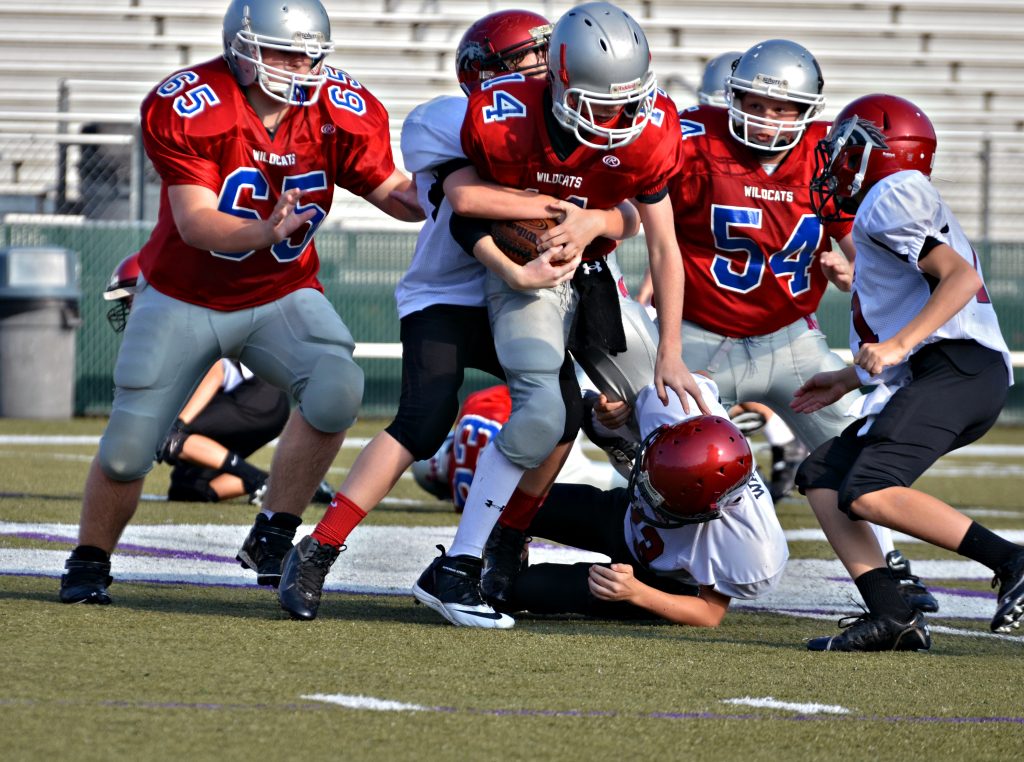Concussion Prevention Tips

In order to talk about how to prevent a concussion, we first have to understand what causes a concussion. Basically, a concussion is caused by a rapid acceleration or deceleration of the brain inside the skull. The brain tissue “stretches” causing stimulation of the brain tissue and disruption of information processing.
This next point is important – you do not need to be hit in the head to get a concussion. A hit to the body can cause whiplash, which can also be the source of a concussion. So, how do we prevent a concussion from happening?
Let’s take a look at three recommendations to reduce the risk of a concussion:
- Protective equipment:
- Helmets protect the skull, not the brain. With impact, the brain will still move inside the skull. While they don’t prevent concussion injuries, helmets are designed to prevent skull fractures, which is very important! Also, helmet fit matters. A 2016 study comparing two groups of football players found that the group who had properly fitting helmets had less severe concussion symptoms and recovered faster versus the group who had poorly fitting helmets.
- Mouthguards also do not prevent concussions, however, they are meant to prevent and/or reduce dental injuries and tooth fractures, which is also very important!
- Headgear in spots such as soccer or rugby, once again, does not prevent concussions or reduce the risk, but may have some protective effect for the skull and/or soft tissue. For example, decreased scrapes and abrasions from heading the ball.
- Neck strength:
- A stable neck helps to reduce acceleration force on the brain by reducing the amount of head movement after an impact. However, research shows that neck strength alone is not enough to prevent concussions – you need to have strength and “stiffness.”
- Neck “stiffness” equates to improved awareness of surroundings and good timing. For example, if you see the hit coming, you brace yourself to prepare for the hit, which reduces the effect of the impact. You also need enough time to prepare, which is why concussions often happen to people who are blindsided or don’t see the hit coming.
- Rule updates for organized sports:
- The National Football League (NFL) and National Hockey League (NHL) have eliminated hits to the head and created fines for deliberate head contact since stricter enforcement of penalties for high hits and elbows to the head had marginal protective effects.
- Changes in amateur sports include eliminating body hits in pee-wee hockey (a University of Calgary study found this reduced concussions by 67%) and limiting contact practices in U.S. high school football to no more than two a week, reducing contact to the head by 42% in practices and by 53% in games.
In summary, protective equipment does not significantly reduce the risk of concussion, however, it is very important to reduce skull fractures, dental injuries, and/or soft tissue injuries. It is also important to have properly fitting equipment. Neck strength and stability can help reduce the risk of concussion in scenarios where you are able to see the impact coming and have time to brace for impact. The best way to prevent a concussion is to avoid contact altogether.
However, we know accidents happen. If you suspect you or a loved one may have sustained a concussion, we’re here to help! Ask your physician for a referral to our Total Concussion Care program.
Did you enjoy this article? You may also be interested in 9 Ways to Get Better Sleep After a Concussion. Download the PDF below!
